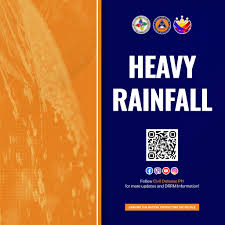Severe Rainfall Warning Across Canada: What You Need to Know

Introduction
With the onset of fall, Canada is facing a severe rainfall warning that has been issued across several provinces. This alert comes as significant rainfall is predicted, potentially causing flooding, travel disruptions, and impacting daily life for many residents. Understanding the implications and preparations necessary during such weather events is critical for ensuring safety and minimizing disruptions.
Details of the Rainfall Warning
The Environment Canada meteorological service issued the warning earlier this week, indicating that heavy rainfall is expected in regions such as British Columbia, Alberta, and parts of Ontario. Forecasts suggest that some areas could see rainfall totals exceeding 100mm within a span of 24 hours. This level of precipitation raises concerns about potential flash flooding, landslides, and hazardous driving conditions.
Local authorities have advised residents to stay updated with the latest weather reports and prepare accordingly. Emergency services are on high alert, and communities are encouraged to check the resilience of drainage systems, secure loose outdoor items, and create emergency plans for potential evacuations if necessary.
Impact on Communities
Communities in the affected areas are urged to remain vigilant. The rainfall is not only a concern for immediate safety but also poses long-term challenges, particularly in regions prone to flooding. The risk includes damage to property, interruption of essential services, and disruptions to transportation networks, which can affect emergency response efforts.
Local organizations and governments, including the Canadian Red Cross, are providing resources and guidance on how to stay safe during severe weather. They recommend having an emergency kit ready, which includes food, water, prescriptions, and other essentials.
Conclusion
As Canadians prepare for the impending heavy rains, it’s vital to stay informed about developments related to the rainfall warning. Authorities suggest monitoring local updates and adhering to safety guidelines to mitigate risks. The potential impacts of such weather events highlight the importance of preparedness and resilience in communities across the nation. With climate change influencing weather patterns, the frequency and severity of such warnings are likely to increase in the future. Therefore, proactive measures and community readiness will be key in navigating these challenges.


